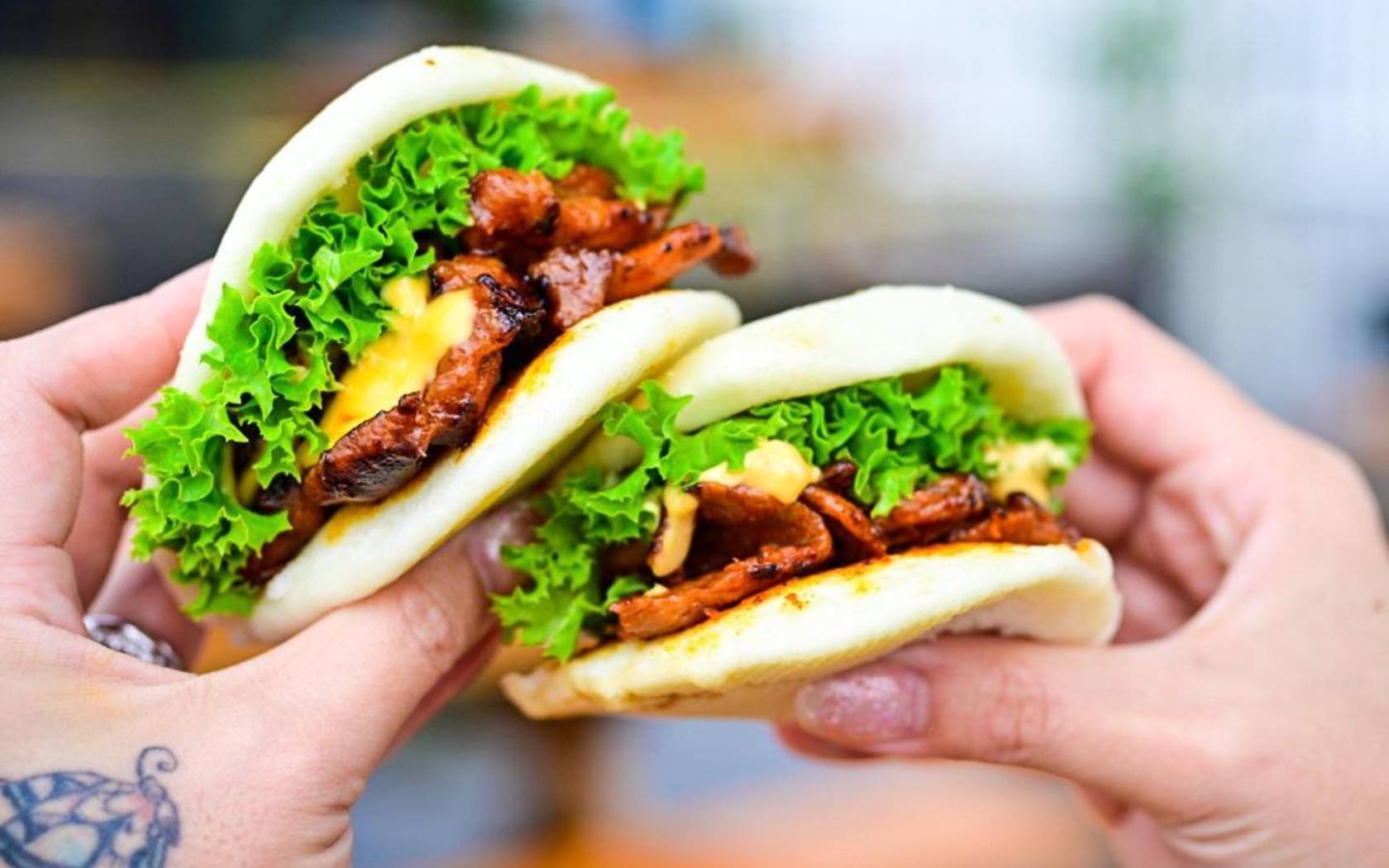How To Eat Like A Local In Vietnam

Contiki Australia - www.contiki.com
Elmo Keep is a writer and journalist making her way…
Vietnam is a country defined by its diversity, but one thread pulls it all together. From the historic and hectic Hanoi to the easygoing coastal town of Hoi An and the bustling hub of Ho Chi Minh City (or Saigon, as it is locally known), the binding rivets of Vietnam’s regions is in the love of food. ELMO KEEP travelled through Vietnam with Contiki, chronicling her gastronomical experiences of food enjoyed the local way.

Things I’ve eaten and enjoyed in Vietnam include but are not limited to: turtle, crocodile, frog, century egg, one-sun dried squid, some mystery meat of unknown provenance, and a fresh cobra’s heart served in a shot of vodka.
Also: pillow-soft lobster; just-caught fish charred over coals and wrapped in silky noodle with coriander and mint; banh mi; bun bo hue; bun cha; cao lầu; buttery hot pastries served with fresh coffee the strength of rocket fuel; chillies so potent I felt it on the outside of my face for three hours; and, of course, phở. With its unique admixture of Chinese, Japanese, French and native influences, Vietnam is a culinary paradise and a country so strikingly beautiful and welcoming that no one leaves without swearing they will be back as soon as humanly possible. Its rich cultural history – made up of so much more than its horrific suffering as a country invaded many times over thousands of years – makes Vietnam a place of rare privilege to visit as a Westerner.
GOOD GOD, the food

To find the best local food in a new city, you need to do your research. The best recommendations will always come first and foremost from friends who have been where you’re going. After squeezing their mind grapes, next stop: INTERNET. Go deep on TripAdvisor boards and you’ll find some good leads (avoid Yelp), but it’s really hardcore dedicated food blogs you want to hit up, especially those written by chefs taking themselves on a food safari, or bloggers committed to tracking down the best version of a certain dish they are sworn to find in every city they visit. Put time and effort in here. This is also a super fun way to get excited about your trip when you haven’t actually left yet – imagining what you are going to eat is half the pleasure of eventually eating it.
When you are looking for good local food once you are there, you generally want to get as far away from your hotel as possible. Hotels clustered together and the streets around them are all designed to extract as much money from tourists as possible. Restaurants there usually specialise in horrible Westernised versions of local fare, or are only serving expensive plates of pasta and pizza aimed at people too afraid to try anything new.
The overwhelming feeling you should have at all times away from home is one of profound foreignness. You can eat what you eat at home at any time.

In the country’s north, Hanoi is Vietnam’s wonderfully temperate, beautiful and historic capital. The old quarter is the original 36 streets of the city, still home to tailors, silk makers and leather goods workers. Narrow shuttered windows in the facades of the Parisian-style buildings open onto the streets, which are ceaselessly ringing with the beeping of scooter horns.
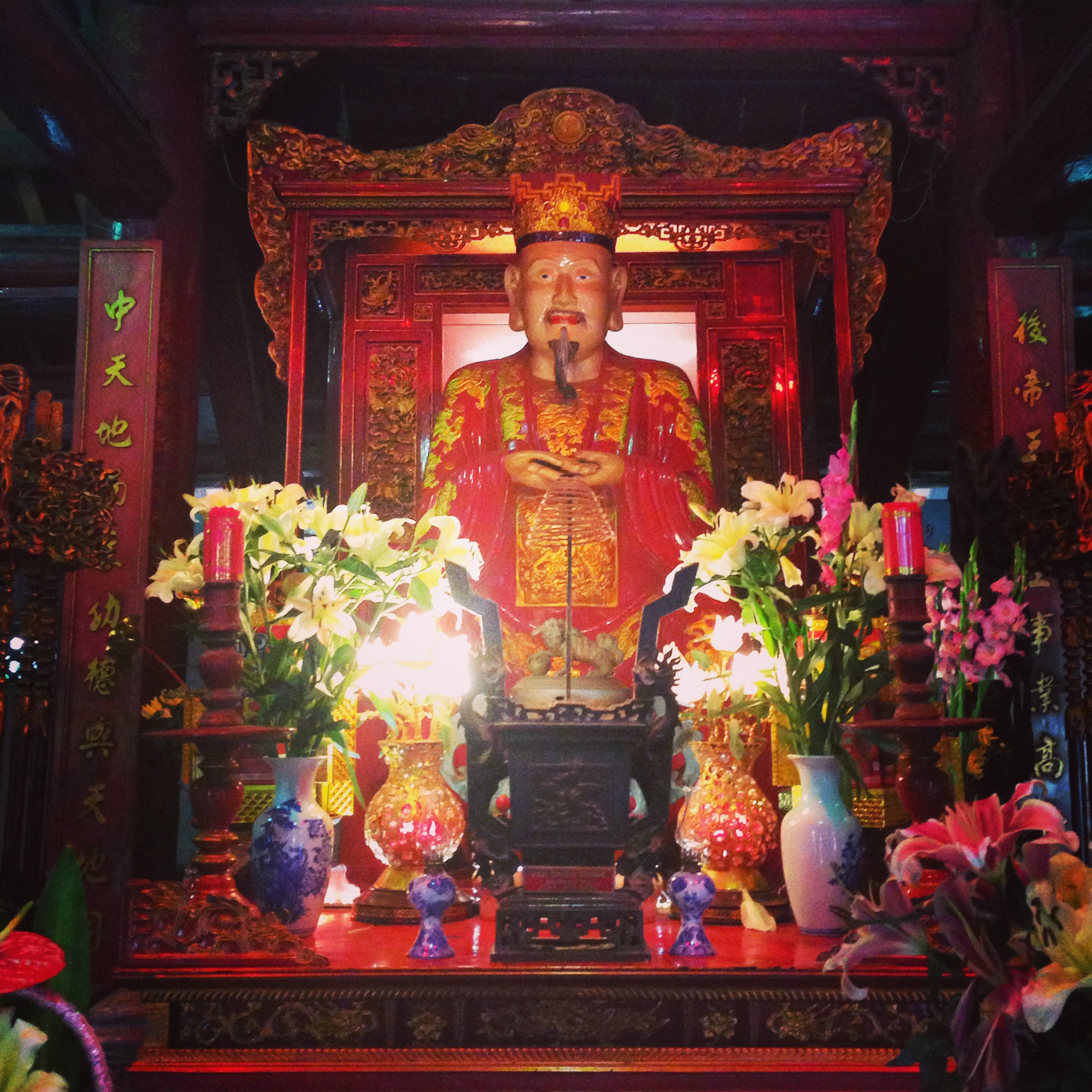
As the French administrative centre of Indochina under colonial rule, the Parisian influence lives on most strongly in Hanoi, in ornate buildings like the Grand Opera House, the Presidential Palace, the Hotel Metropole, the Temple of Literature and the pagoda at Hoàn Kiếm Lake; living links to the city’s centuries-old history.

“No tourists” is a phrase you should learn how to say, along with the other basics to learn before you arrive. Ask your hotel manager or concierge where they would go to eat. The best way to get around Vietnam is on the back of a scooter, which is why you can never go anywhere without travel insurance. Have your concierge flag down a rider they know for you and have an idea of where you want to go culled from your research. Snap a photo of the map to your phone so you can access it without coverage if you need to. I’ve found that asking your rider to take you somewhere they like to eat is usually the quickest path to an excellent meal.
The local street food specialty of Hanoi is bun cha, a deep fried or grilled fatty, minced pork morsel wrapped in leaves, served in a soup with chilies and herbs—cilantro, thai basil, mint and bean sprouts—and a side of white rice noodles, more chopped chillies and ginger. Look for the bun cha sign at the street stalls, and pick a busy one. If you aren’t sure how to put it all together, just watch everyone else. With a coffee or a beer, this will set you back $5.

Another famed Hanoian specialty is cha ca; similar to bun cha, but with the meat replaced with fish grilled right at your table and served with peanuts and noodles, tumeric and dill. The essential place for this dish is at its birthplace, Cha Ca La Vong, in the old quarter. The only thing they serve is cha ca, and it is packed for lunch and dinner every day of the week, but worth the wait for the intoxicating delight of sitting in its smoky, rickety surrounds.
While still in the old quarter, Hang Hanh Street is dedicated solely to traditional coffee shops – you’ll feel caffeinated just from inhaling the incredible aroma of the countless brewing phins.
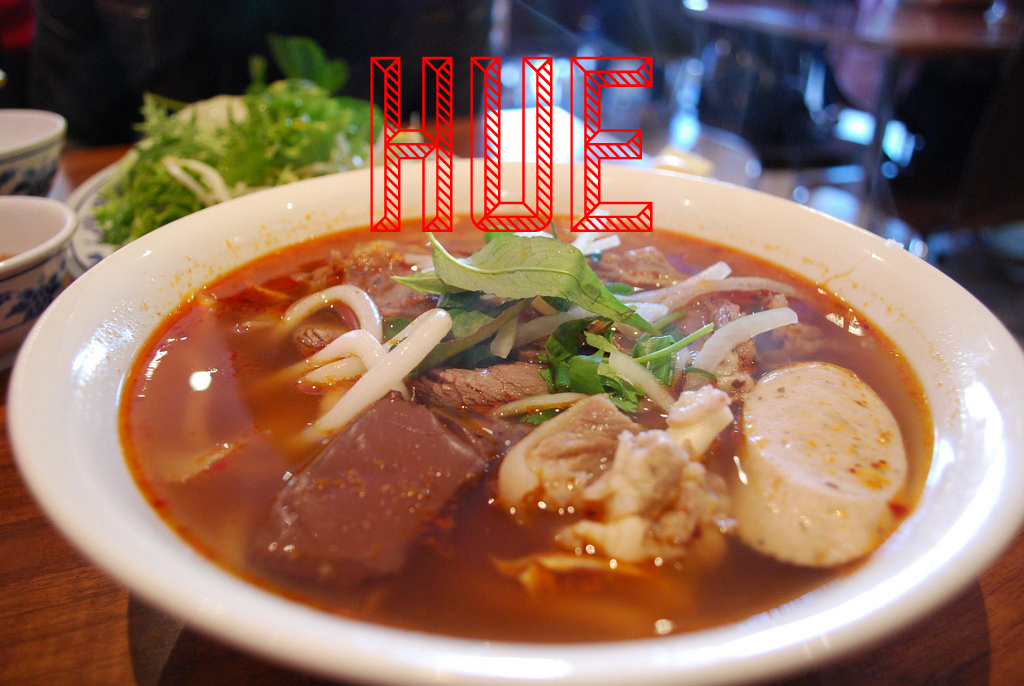
Huế is the home of the eponymous bun bo huế noodle soup: a richer, spicier version of phở made with slices of beef brisket and thicker noodles, it originated here in the country’s former capital, which was once home to the royal court. The stock in bun bo huế is made of ham hocks and beef shank, ox tail, congealed pig’s blood and a strong accent of lemongrass along with its other chillies and spices, all stewing on the boil for hours before it gets to you.

Vietnam is a terrific place to feel like an ungainly giant. When you sit at the low tables on the street your knees will come up somewhere around your ears, but it is worth looking like a moron for this street food. Crisp draft beer is extremely popular all across Vietnam, and is most often served in a glass with a huge chunk of ice in it. My rider took me to his favourite dinner spot, where I was served with my food as soon as I sat down. This delicious meal cost me $2 including the beer, and another $2 for the ride from and back to the door of my hotel. Always tip your rider.
This is what the afterlife looks like:

Huế is also home to the sprawling Dong Ba markets, almost inconceivably busy and packed with fresh food and anything else you could possibly need. Indoors, in the middle of the huge complex, is a stretch of street food stalls teeming with locals –anywhere that is packed with local patrons is guaranteed to be good. Here I ate another bowl of bun bo for good measure, and an endless parade of whatever was put in front of me: fragrant fresh rice paper rolls filled with mint and thin slices of pork served with tangy hot dipping sauce, tiny, chewy translucent dumplings stuffed with seafood, crispy deep-fried moneybags of indeterminate content and spicy hot chicken skewers roasting over the coals beside the table we were sitting at. The food will keep coming until you say stop – this happens anywhere you eat the street food in Vietnam.
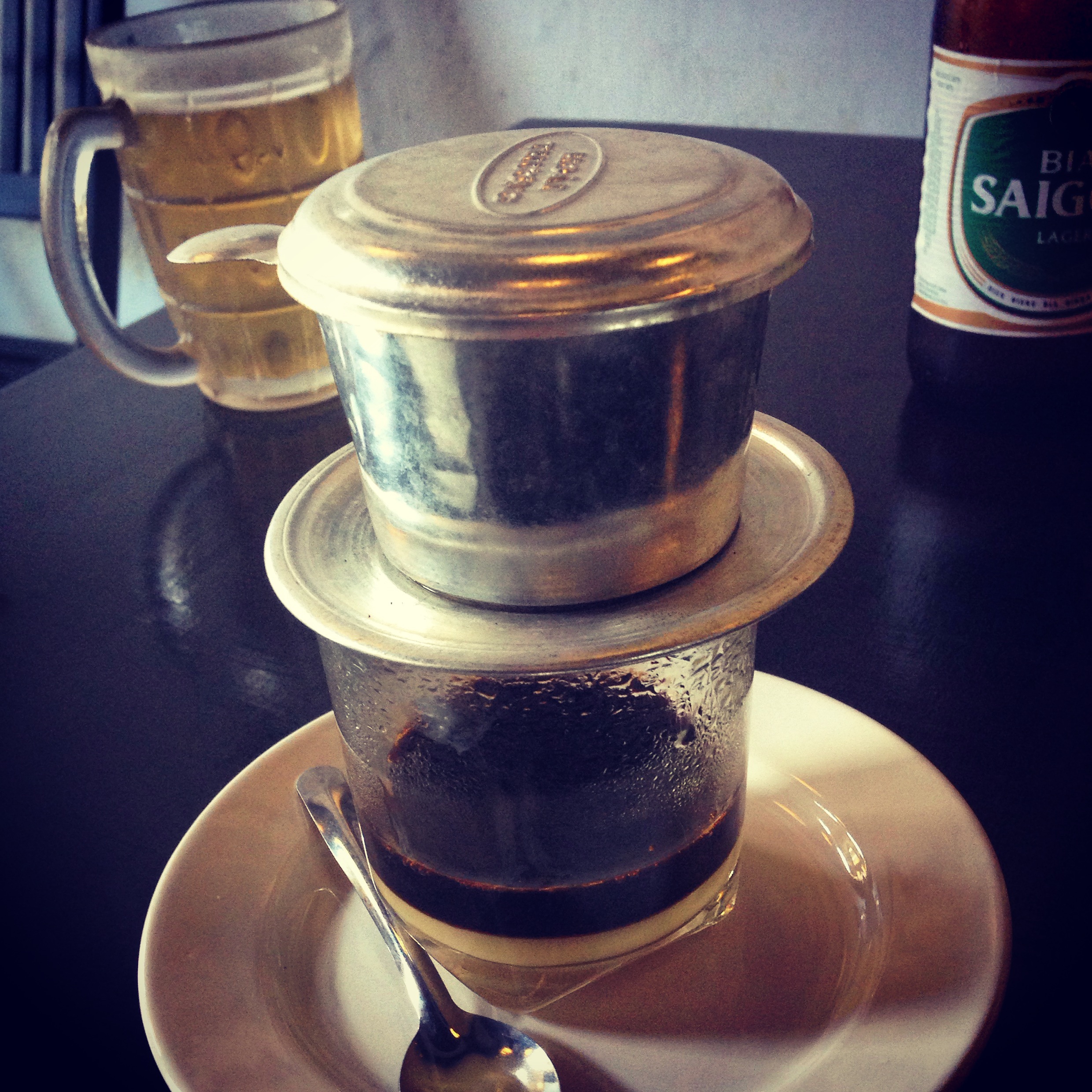
After Brazil, Vietnam is the largest producer of coffee in the world and they drink it a lot. It is very, very strong and comes served with condensed milk you stir through to sweeten it. In most places you’ll want to pour it over a glass full of ice cubes, but especially so in sticky, humid, very hot Hue. This meal was $6 all up. Strike a deal with your rider and they will wait for you outside the market and drop you back at the hotel. Again: always tip your rider.

The road between Hue and Hoi An takes you through enormous mountain passes of breath-taking beauty potted with waterfalls, making for a hypnotising few hours of gazing out the window.

Visiting Hoi An, a UNESCO world heritage site, is like traveling back in time. Cars are banned from the streets so most people get around by bicycle, and there are far fewer scooters than in other parts of the country. You can hire a pushbike for $1 for the day and it is the perfect way to explore the small ex-trading port, which once thrived on the trade route between the 15th and 19th centuries. There is a strong French influence in the architecture of the streets – a hold-over from colonial rule – as well as an intact, wooden Japanese bridge from the 18th century, crossing the river that divides the town. The unspoiled beaches of Da Nang are just a 4km bike ride away.
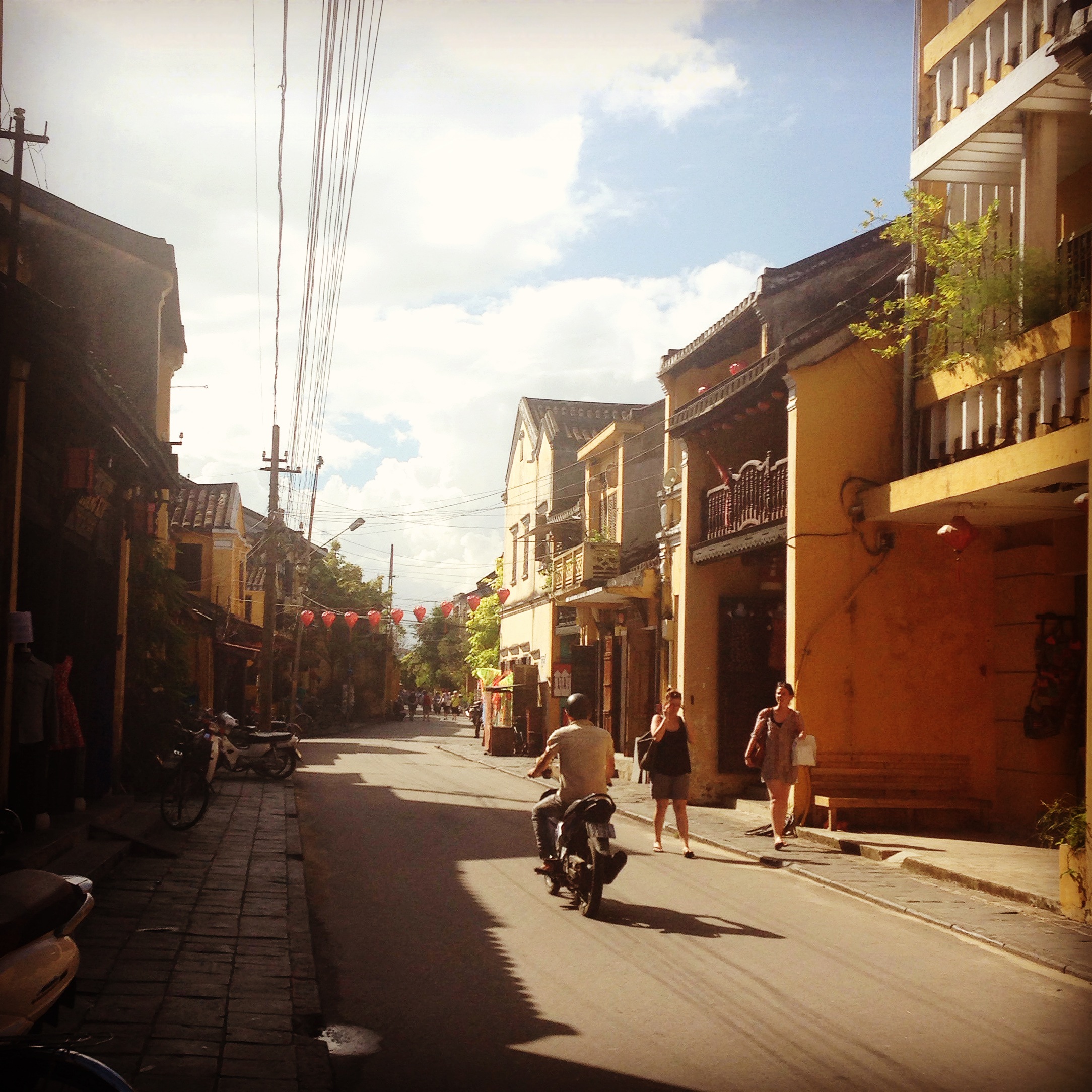
Hoi An’s strong French influence lives on today not just in the street architecture, but in the frankly divine, fluffy pastries you can eat there as if you were in Paris and not South-East Asia. The most famous of these are served at The Cargo Club—the coffee here is the strongest I drank in all of the country. You can also find a very, very tasty banh mi in Hoi An at Bánh mỳ Phượng, a street stall with tables inside that is always serving a long line of locals – you might have to be a little pushy to get served if it’s dinner time. A beer and a sandwich served in a steaming-hot and crunchy fresh baguette will set you back $4 and you will really need the beer; the chilli oil poured over the pork is scalding-hot, in a good way.

Other Hoi An delicacies include banh xeo pancakes at Ba Le Well, which is hidden down an alley and a paradise to come upon; prawn or pork white rose dumplings; and cao lầu, a pork and noodle dish which is native to Hoi An and said to be made with the water of a secret well. The best can be found at Trung Bac.
There are fewer simpler or lovelier pleasures than eating alone on a balcony overlooking the river at night. When I was there one evening, the moon was full and enormously yellow, casting its watery shadow. There are hundreds of lanterns hanging from the awnings of the buildings lining both sides of the quiet river, and you can pay $1 to send a tiny, candle-lit paper lantern of your own across the water for good luck. Watching the little lights of these fade into the night carrying their wishes while drinking yet more Saigon bia as the evening cools around you is an experience not to be forgotten.

I would like to retire to Hoi An, or more to the point, live there right now. So, goodbye.

While internationally known as Ho Chi Minh City, nearly everyone who lives there calls the electric metropolis in the country’s south Saigon.
No place on Earth has ever grown as quickly as Saigon did between 1995-2005, when it was first opened to investment from the West and an explosion of development quadrupled the size of the city.

Seven and a half million people now live there and just about every one of them rides a scooter – one for every square metre of street. Once you’ve had your first Vietnamese coffee, the ceaseless, whirring tenor of the traffic will make immediate sense.
But, pressingly, how the hell do you cross the road?
You just walk into the traffic.
When you do, you have to commit and walk quickly to the other side without stopping. Bikes will anticipate your movements and weave around you, but cars will not, so wait for them to pass – don’t try and get them to stop for you.
Saigon is an amazingly cheap city to visit, with three-star hotels from $25 per night. If you spend a little time looking around, you can find bookings in 5 stars hotels from between $80-100 dollars per night. For Sunday lunch, all the five star hotels open their buffets to the public and for $50 per head try and out-do each other in the opulence stakes. Here you can scoff all the lobster, chilli crab, oysters, prawns, steak, cocktails, Verve champagne, desserts and whatever else you can manage to eat and drink in three hours. It’s fun to feel like you’re living la vida loca, and you probably won’t be able to eat for the next two days so it’s a sound investment. The Intercontinental was off the hook for this decadent, indulgent TOTALLY WORTH IT dining experience. Maybe bring a bib.

Back down on Earth, there are myriad options for the $5 budget, with street food around every corner – just pick the busiest local place and point enthusiastically at what you want, and you will be loaded up with more than you can eat. “Cảm ơn” is how you say, “thank you”.
Pho 2000 is famously where Bill Clinton ate as the first US President to visit Saigon after the Vietnam War (which Vietnamese people refer to as the American War), and his likeness still adorns the walls. This place looks out over the city’s largest roundabout, and it’s mesmerising to watch the traffic flowing around. Another great place to eat pho is the roof of the historic Rex Hotel, which looks out over the main intersection of downtown – it’s served with chilies so hot they can bruise your mouth. Nearby also is Hoa Tuc for cheap, lovely local dishes, and the L’usine cafe, where melting-soft red velvet cupcakes and coffee to match is an ideal way to spend an afternoon watching the street from the second floor windows. Downtown is also home to an enormous array of luxury shopping options (this is a free market Communist economy) from Louis Vuitton to Swarovski, if that’s your thing. Or perhaps like me, you just like to pretend that you sleep on a pile of money at night, and window shop instead.
This chi-chi part of town also serves up some bona fide French-style steak frites at La Niçoise, a delicious reminder of why Saigon was for a long time referred to as “The Paris of the Orient.”
To make your own Vietnamese coffee, stop by the Bến Thành Market and pick up a little silver cup filter (phin) and a bag of vacuum-sealed beans. That way, you can recreate those heart palpitations in the comfort of your own home once you are sadly back there, pining for the next chance you get to go back to the country that everyone who visits leaves a piece of their heart in.
(Lead image: Khánh Hmoong/Flickr)
Elmo Keep is a writer and journalist making her way to America. She blogs postcards at I Went Where I’ve Been and she also tweets here.








